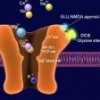The title describes it. With its ease of availability, the cheapness, and the supposed great effects 60 micrograms, why is it not taken more?

Methylene Blue
#1
Posted 20 June 2011 - 10:49 PM
The title describes it. With its ease of availability, the cheapness, and the supposed great effects 60 micrograms, why is it not taken more?
#2
Posted 21 June 2011 - 01:31 AM
Because you'll be a circus freak? Your skin and piss will be blue.The title describes it. With its ease of availability, the cheapness, and the supposed great effects 60 micrograms, why is it not taken more?
I have no idea. I tried Googling it, but I only found stuff that treats fish tanks. I have no idea if that's safe for human consumption. I doubt it.
#3
Posted 21 June 2011 - 01:58 AM
http://www.longecity...th-in-old-mice/
http://www.longecity...ue/page__st__70
http://www.longecity...ne/page__st__40
http://www.sciencedi...014299905001329
http://www.ncbi.nlm....pubmed/19005644
http://www.fasebj.or.../3/703.abstract
http://www.scienceda...90929181808.htm (Rember = Methylene Blue)
http://www.longecity...mprize-at-home/
Edited by aaron43, 21 June 2011 - 02:33 AM.
#4
Posted 21 June 2011 - 02:17 AM
Sixty micrograms of methylene blue is not enough to turn your skin or your pee blue.
#5
Posted 21 June 2011 - 03:19 AM
Why so serious?Well, I see you did a search; when I searched the forums for the string "methylene blue" I got something like sixty threads, including this one, which is kind of the grand-daddy of them all.
Sixty micrograms of methylene blue is not enough to turn your skin or your pee blue.
#6
Posted 21 June 2011 - 03:36 AM
Why so serious?
Haha. I was about to suggest that your original post was actually a pretty good list of reasons why more people aren't willing to try it.
Additionally, I'm sure more people will want to try it once a celebrity or two does. Like say Ray Kurzweil or the Wakfers.
#7
Posted 21 June 2011 - 04:10 AM
Let me clear this up:
Methylene Blue does NOT turn your urine or skin blue if following the proper dose at 60 MICROgrams. It doesn't turn your skin blue unless you spill some on it, which goes away. Its toxicology profile is excellent. It is already a prescription drug at much higher doses. The dosage required for nootropic use is much lower, so my question is:
why is it not used more?
If one were to google for Methylene Blue, that's the kind of stuff that one would find. Plus there's the ick factor of the fish treatment. The unfortunate fact is that people don't seem to be willing to try things unless an Authority Figure recommends it first. I must confess that I'm also vulnerable to this, just not in this case.
Edited by rwac, 21 June 2011 - 04:15 AM.
#8
Posted 21 June 2011 - 04:18 AM
Searching "methylene blue nootropic" or "methylene blue forum", "brain methylene blue" ect will help.
Its used for anti-fungal treatments, not for fish. Fish (synthetic aquariums) just happen to benefit from the product.
Its used in the cure for cyanide poisoning as well
Edited by aaron43, 21 June 2011 - 04:19 AM.
#9
Posted 21 June 2011 - 04:21 AM
OMG, I am going to die laughing. I wasn't actually 100% serious. However, no one who has never used it before doesn't know that. Plus, it would be cool, and you know it... so now I might not try it. I was really looking forward to blue pee. (jk, again... just in case the dry humor needed some whetting)Let me clear this up:
Methylene Blue does NOT turn your urine or skin blue if following the proper dose at 60 MICROgrams. It doesn't turn your skin blue unless you spill some on it, which goes away. Its toxicology profile is excellent. It is already a prescription drug at much higher doses. The dosage required for nootropic use is much lower, so my question is:
why is it not used more?
ps. the proper dosage doesn't even turn the water blue.
I saw studies on it, but wasn't sure if the fish tank stuff was for human consumption. I know that sounds dumb, but that could be a reason why people just haven't spoke up about it. I can take the fish tank stuff, right? It's cheap as all hell, and I'll buy it if someone just gives me a green light and says "This brand here passes purity ratings for human consumption." I just don't want to be taking it and have my bones fill up with fluoride and lead or something crazy.
#10
Posted 23 June 2011 - 07:40 PM
#11
Posted 23 June 2011 - 08:18 PM
Sorry about that. I was a little agitated by your tone in response to my reply, so I hit it. Then I felt bad and couldn't undo it. If you notice, your next two replies I hit a positive to make up for it.ps. I just facilitated about 20 studies in a fashion that could be understandable from a outside reader's perspective. I just shed new light on information never previously disclosed on longecity, and I get a negative. lol.
#12
Posted 11 July 2011 - 06:19 AM
#13
Posted 25 October 2011 - 09:04 AM
Here's the split threads. This one is now redundant, and should probably be allowed to sink.
Methylene Blue Experiences
Methylene Blue Dosing and Products
Methylene Blue Research
Methylene Blue and MAO Inhibition
These topics are interrelated, but we should try our best to keep discussions as segregated as realistically possible, to make the information easier to find in the future.
Edited by chrono, 25 October 2011 - 09:37 AM.
#14
Posted 25 October 2011 - 01:32 PM
#15
Posted 09 June 2012 - 05:45 PM
Edited by NMDAstronaut, 09 June 2012 - 06:35 PM.
#16
Posted 05 August 2015 - 12:53 AM
Can't post in the experience section, so guess I have to post my experience here.
I'm using MB now for 2 month straight. Analytical grade from Carl Roth. I mixed 250mg with 20mL of denaturated water in a brown bottle with a dropper. Each drop is ~0.5mg. Usually I put 1 drop into 1/4 of a cup of water, mix it then drink it all, say, every 3-4 hours during the day. Each day a week.
However I started this with another mixture of 250mg of MB + 500mg of ascorbic acid in water, but that did go well. After a few days the previously clear, slightly blue solution turned sluggy greenish. So I did the previous mentioned mixture without the ascorbic acid, which seems to be stable until now.
From week 3, I combined with CDP-Choline, but due to concerns about excessive vascular growth in my eyes (see the other thread) I stopped that a few weeks ago, falling back into taking MB only.
Now, from my experience I would say that MB, in its mitochondrial dose, should be considered by people with poor metabolic condition, due to a lack of physical exercise and bad nutrition habits. Overdoing sugar and stuff. The picture of a "couchpotato" who is close to a diabetic state.
I was such a person. Not that I wasn't motivated to do exercise and get my body in a healthy state. My will-power is good. It was just that, whenever I started any work out, even the slightest, a few hours later I ended up with headache, fatigue, brain fog and a total lag of motivation, rendering me pretty much useless in my job as a mathematician. So I just didn't do sports at all. Just doing work on my computer, sitting or laying on my bed, excepting my shitty body for the sake of a clear mind. Of course I gained weight and conditions gets worse, which I compensated with sugar.All to keep my brain clear and motivated. That worked but of course its not a long term strategy. Anyway I did that for a couple of years now.
So I started with MB as described above and right from the first exercise, I noticed a huge change in how my body reacted afterwards. No brain fog! Slight fatigue yes, but only in my body not in my brain. I could live with that.
So I started to drive my bike for 90min each day and it worked. No reduction in mental abilities. Just clear analytial
power just if I hadn't done any sports at all. After two weeks, I could feel that I got stronger so I changed to slow running and today after 8 weeks I already lost 5kg and I'm now capable to run, I mean really run fast, trough the big city I live in! And no matter how hard I work out, I still can work, clear minded. No mental fatigue.
For me that's really amazing! I'm 38 years now and in only 8 weeks I transformed from a couchpotato into someone who runs like if he were 20 years younger. (I reeeally enjoy running fast)
P.S: When I look around at my university, I see a lot of people, which I would describe as "close to a diabetic state". Therefore especially at place where people only work with their brain, MB+exercise could be of great value.
Edited by RobertPaulsen, 05 August 2015 - 01:12 AM.
#17
Posted 11 August 2015 - 10:06 PM
Test to subjectively 'proof' that the micro-gram ranges of MB already have an MAO-A inhibitory effect:
-----------------------------------------------------------------------------------------------------------------------
Go and buy some DXM. Then if you haven't used MB for a few days, take 90mg DXM. Most people will barely notice anything here. Maybe a very mild effect. Wait a day. Then take 200 microgram (MICRO) MB and 30 minutes after that take 90mg of DXM again.
In my case then I can feel a serotonin "rush" by this combination, so to me this means the MAO-A Inhibition has been proofen in the micro-gram range. DXM but not its main metabolite DXO is a seroronin reuptake inhibitor. If I wait to long. Say 3 hours after the intake of the MB, before I take the DXM, the effect is similar, to the effect without MB. I tested with other doses of MB and could go as low as 100 micro grams.
Attention: Be careful to not take much more DXM with the MB here. Of course we want to prevent a toxic serotonin syndrom! And don't do this test, if you use other stuff that interferes with the serotonin system. That might be dangerous, but more important it will fuck-up a clear result, rendering the whole test useless in the first place.
--------
Conclusion: MB is a strong but reversible MAO-A inhibitor. Recall that the MAO protein is located on the mitochondria! That means to me that even in the micro gram range 100 - 200 mug, enough MB reaches the mitochondria, to 'do something'. Now considering that we only need approx one MB molecule per cytrochrome c, to drive the mitochondria effect, this micro dose IS THE CORRECT DOSE. (To much MB per cytrochrome c and the effect reverses.)
If it does not work in the micro range for you, then your mitochondria just don't have to be improved and MB is likely not made for you. IMO
The biggest problem, I think, is the expectation. People often want to "feel something", like they are secretly searching for a stimulating drug. Then not feeling anything, pushes some to the "take more and it does more" kind of conclusion.
Edited by RobertPaulsen, 11 August 2015 - 10:42 PM.
#18
Posted 12 September 2015 - 02:09 AM
I have zero knowledge about the "chaperonin Hsp70". Even recognized it for the first time in that study. Can anyone say more about what such an antagonist implies? Has it negative effect on the immune system?
According to this wiki: https://en.wikipedia.../wiki/Adaptogen (at Pharmacodynamic) the chaperonin Hsp70 is the main target of the great adaptogens, like ginseng and reishi ect. So if they agonize here, then an antagonist might be very unhealthy, not? What do you think? --Maybe I'm misguided here..
Edited by RobertPaulsen, 12 September 2015 - 02:13 AM.
#19
Posted 12 September 2015 - 02:19 AM
Yeah, no thank you.
Biochem Pharmacol. 1993 Jan 26;45(2):367-74.
Inhibition of nitric oxide synthesis by methylene blue.AbstractMethylene blue appears to inhibit nitric oxide-stimulated soluble guanylyl cyclase and has been widely used for inhibition of cGMP-mediated processes. We report here that endothelium-dependent relaxation of isolated blood vessels and NO synthase-dependent cGMP formation in cultured endothelial cells were both markedly more sensitive to inhibition by methylene blue than effects induced by direct activation of soluble guanylyl cyclase. These discrepancies were also observed when superoxide dismutase (SOD) was present to protect NO from inactivation by superoxide anion. Subsequent experiments showed that formation of L-citrulline by purified NO synthase was completely inhibited by 30 microM methylene blue (IC50 = 5.3 and 9.2 microM in the absence and presence of SOD, respectively), whereas guanylyl cyclase stimulated by S-nitrosoglutathione was far less sensitive to the drug (50% inhibition at approximately 60 microM, and maximal inhibition of 72% at 1 mM methylene blue). Experimental evidence indicated that oxidation of NADPH, tetrahydrobiopterin or reduced flavins does not account for the inhibitory effects of methylene blue. Our data suggest that methylene blue acts as a direct inhibitor of NO synthase and is a much less specific and potent inhibitor of guanylyl cyclase than hitherto assumed.
PMID: 7679577 [PubMed - indexed for MEDLINE]
#20
Posted 12 September 2015 - 03:10 AM
Edited by RobertPaulsen, 12 September 2015 - 03:26 AM.
#21
Posted 12 September 2015 - 04:03 AM
What's your point? From that abstract you copied, I can only deduce that one has eventually think about ones L-citrulline level.I mean the NO-inibition is long known here. Or is there an additionalpoint, I miss?
NO inhibition is not good for neuronal or cellular function.
Nitric oxide protects against cellular damage and cytotoxicity from reactive oxygen species
http://www.nitricoxi...n-function.html
Neuroreport. 1993 Oct 25;5(1):87-9.
Nitric oxide increases dopamine and serotonin release in the medial preoptic area.AbstractNitric oxide (NO) is becoming recognized as an important intercellular messenger in the brain. The present experiment used microdialysis to examine the potential role of NO in the regulation of dopamine (DA) and serotonin (5-HT) release in the medial preoptic area (MPOA) of freely moving male rats. The NO precursor L-arginine (L-Arg, 100 microM), administered into the MPOA via the dialysis probe, increased extracellular levels of DA, 5-HT, and the major metabolites of DA. These increases were blocked by the coadministration of the NO synthase inhibitor N-monomethyl L-arginine (NMMA, 400 microM). The inactive isomer D-arginine (100 microM) was ineffective, and NMMA by itself decreased DA below baseline levels. Thus, NO may modulate the release of DA and 5-HT in the MPOA.
PMID: 8280866 [PubMed - indexed for MEDLINE]
#22
Posted 13 September 2015 - 02:03 AM
Sow when taking MB, do you just buy the fish tank one or do you have to go after medical grade versions?
#23
Posted 13 September 2015 - 02:19 AM
I really hope that someone, fluent in biochemistry, gets hocked-up by the HSP70 antagonism of MB. In my current understanding such a HSP70 antagonist should be called a pro-stress medicine in the sense that it helps to induce stress, as opposed to an adaptogen, which reduces stress. (As the common adaptogens might work by enhancing HSP70)
That,of course, would be really bad.
To me the CDP-choline, methylene blue, ginseng combi, gets as close as possible to a very low dose of AMPH (<10mg) when it comes to stimulation and productivity. But of course without the stupid risk of intake escalation of AMPH. I really don't want to give up on this. But HSP70 antagonism might be a concern (while NO inhibition is not! Is quite the opposite).
Edited by RobertPaulsen, 13 September 2015 - 02:33 AM.
#24
Posted 07 November 2015 - 10:34 PM
Just wanted to add that I gave up on MB. As it turns out those HSP70 inhibitors might be really unhealthy in the long run. According to this paper
http://www.bloodjour...so-checked=true
MB and other HSP70 inhibitors in general are B-Cell inhibitors as well. Therefore they might have a negative effect on your immune system. As I wrote I took MB for a certain kind of chronic fatigue state. However in some people viruses like the Eppstein Barr virus are the course of this state. In that case B-Cell inhibitor might make things undesireable in the long run, as B-Cells are the key in fighting virus diseases.
A point to note here is that according to many papers on that topic (See the references in wikipediahttps://en.wikipedia...harmacodynamics ) the pharmaceutical class of adaptogens mainly work their immunomodulation by action as HSP70 promoter. To me this means that HSP70 inhibitors should be avoided in the long run.
#25
Posted 10 November 2015 - 09:21 AM
I ultimately gave up on methylene blue because I like selegiline far more and being on both of them started to result in the "cheese effect" when I ate lots of tyramine-rich foods.
Edit: I'll still use it to troll the occasional urinalysis, boy does Quest have a fun time with green piss.
Edited by 3AlarmLampscooter, 10 November 2015 - 09:22 AM.
#26
Posted 12 January 2016 - 11:50 PM
Just wanted to add that I gave up on MB. As it turns out those HSP70 inhibitors might be really unhealthy in the long run. According to this paper
http://www.bloodjour...so-checked=true
MB and other HSP70 inhibitors in general are B-Cell inhibitors as well. Therefore they might have a negative effect on your immune system. As I wrote I took MB for a certain kind of chronic fatigue state. However in some people viruses like the Eppstein Barr virus are the course of this state. In that case B-Cell inhibitor might make things undesireable in the long run, as B-Cells are the key in fighting virus diseases.
A point to note here is that according to many papers on that topic (See the references in wikipediahttps://en.wikipedia...harmacodynamics ) the pharmaceutical class of adaptogens mainly work their immunomodulation by action as HSP70 promoter. To me this means that HSP70 inhibitors should be avoided in the long run.
If you look at the Blood Journal study you referenced, they used doses 1,000 - 10,000x greater than the doses suggested on this board. I am not sure if I am too concerned about it, honestly, especially considering how rapamycin also impairs B-cell proliferation, and yet improves longevity. I am not saying it's not an issue, just that it's less clearly an issue than you're making it out to be.
#27
Posted 16 January 2016 - 12:36 AM
Greetings guys,
Anybody here that could maybe help me out how to do dilute the methylene blue and water?
I got 1% 25ml Methylene blue and 250ml flask with water, how many drops should i put in?
Would appreciate if anybody could help me ![]()
#28
Posted 28 July 2016 - 08:47 PM
Methylene blue is starting to look a lot more interesting.
Results for a phase 3 trial for the related MB drug LMTX were posted at ICAD in Toronto yesterday and they somewhat encouraging.
http://taurx.com/press-releases/
What is the CAS number for MB?
I am seeing a whole bunch of chemicals called methylene blue with a whole bunch of different CAS numbers.
CAS, 61-73-4, 122965-43-9,152071-32-4, 807306-71-4. There are also quite a few more with similar names.
Which one of these has the brain protecting property?
#29
Posted 17 January 2017 - 11:38 AM
#30
Posted 02 June 2017 - 04:04 AM
"Methylene blue shows promise reversing aging in human skin" - http://newatlas.com/...ing-skin/49787/
The UMD scientists first applied a methylene blue solution to skin cells from healthy middle-aged donors. They found that the chemical was able to lower the rate of cell death, up the rate of cell division and reduce the number damaging molecules known as reactive oxygen species in the cells over the course of four weeks.
Methylene blue was then tested on skin cells from donors who were older than 80 years old. Again they found that the compound had beneficial effects – even to the point of reducing the expression of two genes often used to mark cellular aging: senescence-associated beta-galactosidase and p16.
This is very interesting. I wonder how hard it is to apply methylene blue to existing cremes without turning into a smurf
2 user(s) are reading this topic
0 members, 2 guests, 0 anonymous users


























































